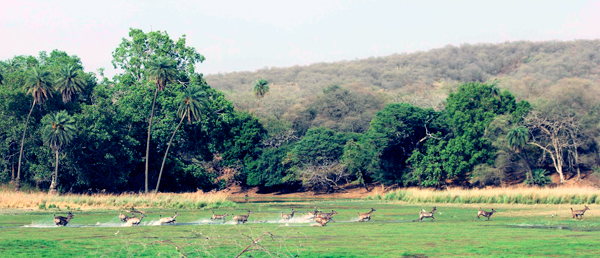
The Garh of Tigers
by Shweta Bhardwaj
It was a regular humid and hot afternoon in the jungle that day; we were patiently and quietly sitting on our jeep looking across the small lake. As one of the member in the second safari jeep pointed towards a set of bushes across the same lake and shouted “There it is! I see it” The atmosphere became tenser. I looked at our guide, he was quiet too. (We were sitting here with our guide with the intention of spotting a Tiger) He pointed towards the trees and bushes across the lake and said “yes, looks like he is planning to charge and make a kill” Then I noticed the frantic sound of birds and monkeys in the area where they all were pointing. Suddenly birds took off from the trees and one of the deer grazing in the lake made the ‘Alarm call’. It is a typical call that animals like monkeys and deer make to warn the herd of the presence of the beast in the area. It was the most desperate and chilling call that can be heard for several kilometres. After this yelp, I saw the entire deer herd (that was enjoying in the lake) running for their life. The calmness and quiet of the jungle was destroyed now. The lake water made sounds, birds in the sky were disturbed, Monkeys hooting and Deer herd galloping and piercing through lake water. Then I saw it! The tiger! Finally, it appeared running and jumping from one of the side bushes on the land and then into the water. Unfortunately, I could not capture him in my camera but clearly managed to capture the fearful deer running for their lives.
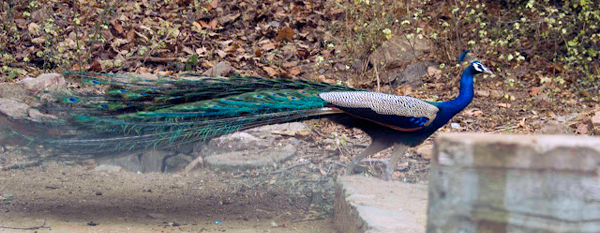 What a majestic creature! That hunts with Precision, Planning and Speed. We were very fortunate to see this majestic creature hunting in Zone- 3. Being there and observing the hunt from a distance, we could sense the fear that the prey (deer & sambars) felt while running for life in the lake. This bolt happened after one member from the herd made the call and informed others of the danger.
What a majestic creature! That hunts with Precision, Planning and Speed. We were very fortunate to see this majestic creature hunting in Zone- 3. Being there and observing the hunt from a distance, we could sense the fear that the prey (deer & sambars) felt while running for life in the lake. This bolt happened after one member from the herd made the call and informed others of the danger.
Ranthambore National Park sits in Sawai Madhopur District of south-eastern Rajasthan. It’s almost an eight hour drive from New Delhi to Ranthambore and we reached our destination about half past midnight.
Nature is purely magical in its own way and I experienced it’s magic when we were driving through the Jungle area at night. It was a different feel altogether, a once in a lifetime experience for me!! This drive was one such unforgettable one! On our way to the park we saw a pack of deers crossing the road before us and disappearing in the thick forest in the moonlight. No words to describe the view and the moonlight.
We stayed at Ranthambore for three days. One day to visit the national park, second day to see the Ranthambore fort and the famous Trinetra Ganesh Temple and the third day to relax and be lazy for a change. In order to have a true Jungle experience we stayed in tents, in the village itself (very near to the national park and the fort).
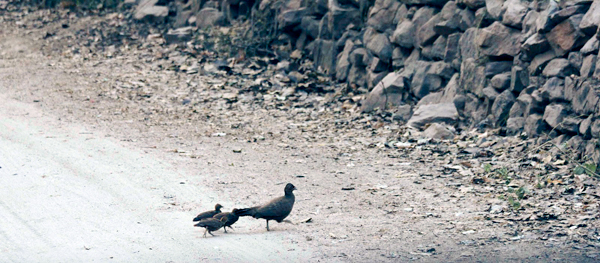
Although the approach to the fort and the jungle is a bumpy, man made, hilly road but one can already feel being inside a densely forested area surrounded by hills. Before saying hello to the king of the Jungle, We spotted various species of birds and animals, like; Cheetal, Black bucks, Neelgai, Langoors, beautiful peacocks, Wood peckers,common kingfishers, Bayas, Bulbul, Mynas, and Quail etc. I was amazed to see a family of quails crossing the road in front of us. That was a beautiful sight indeed. Mama Quail leading the three chicks behind her.
 Some of the animals and birds showed curiosity towards the tourists entering their territory and some behaved as if they have been eagerly waiting for you to click their pictures, especially the Langoors. An interesting thing to note about them was that all of them were so used to humans visiting their habitat that they were least bothered and continued doing what they were busy with.
Some of the animals and birds showed curiosity towards the tourists entering their territory and some behaved as if they have been eagerly waiting for you to click their pictures, especially the Langoors. An interesting thing to note about them was that all of them were so used to humans visiting their habitat that they were least bothered and continued doing what they were busy with.
Climbing the stairs at the Ranthambore Fort gives you the feel that you have travelled back to the olden times. The raw yet beautiful view of the national park from the fort, the lakes, peacocks dancing with their feathers open in all their grace, baby Langoors playing, birds chirping, all this kind of captivates you and takes you back to the times of King Hammir (The ruler who got the fort built in olden times) for a moment. While walking through the fort you cannot stop imagining how the life would have been during those times. We were fortunate enough to see a kitchen utensil made of stone, which must have been used at large family functions/ occasions etc by one of the families settled inside the fort in the olden days. It lay there as one of the remains of what could be a house inside the fort.
The view of the national park from the fort is breathtaking. If you wait patiently and spend some time at the stairs going upwards (inside the fort) and the weather is nice, you can actually spot peacocks dancing in the jungle below near the lakes. As locals say that one can spot a dancing Peacock in the jungle only when the breeze flows cool indicating that it is about to rain soon. Catching a glimpse of two peacocks dancing like that confirmed on our prediction of rains that day.
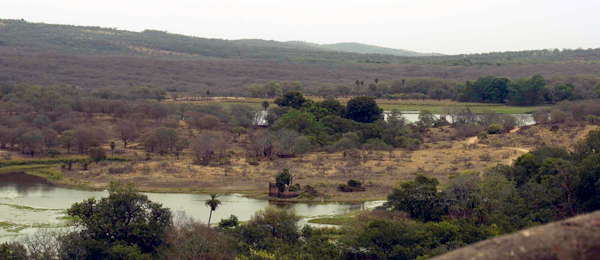
Another important beautiful thing about this fort was the Shiva Temple that we visited. Not many people know of it though. The small room with the huge shiva lingam is pitch dark but is definitely breathtaking. Once inside, you can feel the pure positive vibes. Ranthambore fort is famous for housing another temple called ‘Trinetra Ganesh’ Temple and many people still come here to worship. I got to know from our guide that till date people send the first invitation for a wedding in the house to the deity Ganesha here.
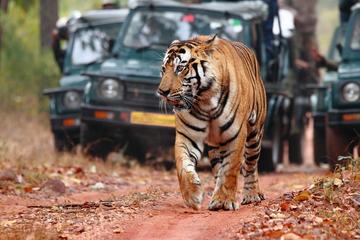
Explore Rajasthan with Tiger Safari at Ranthambore
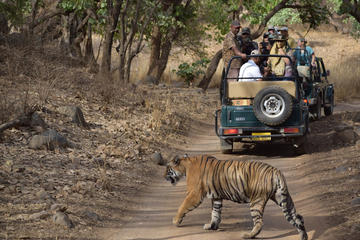
Wildlife Ranthambore Tiger safari Tour With Agra and Jaipur 04 Nights 05 Days
If You Go:
♦ The distance by road is approx 8 hours from New Delhi to Ranthambore (via Jaipur). It is approx. 440 km from Delhi.
♦ Nearest airport is in Jaipur, 150 km away by road. The town Sawai Madhopur has excellent rail connections with metro and other cities in India.
♦ The park is open to tourists from October to June. A lot of migratory birds visit the part during winters, therefore winter months are excellent for wildlife viewing.
About the author:
Shweta is an HR professional and a travel blogger, she loves to write about places that she visits, people that she meets and every day things that touch her. She has a travel blog at www.travel-lanes.blogspot.in
All photos by Shweta Bhardwaj:
Deer Pack running for life as they were attacked by the tiger
Nature’s another beautiful creation – Peacock
Mama Quail leading her chicks – This was captured in our camera on our way back from the fort
Animals are used to having humans around – This Langoor sat as if it was posing for my camera only
View of the national park as seen from the fort


